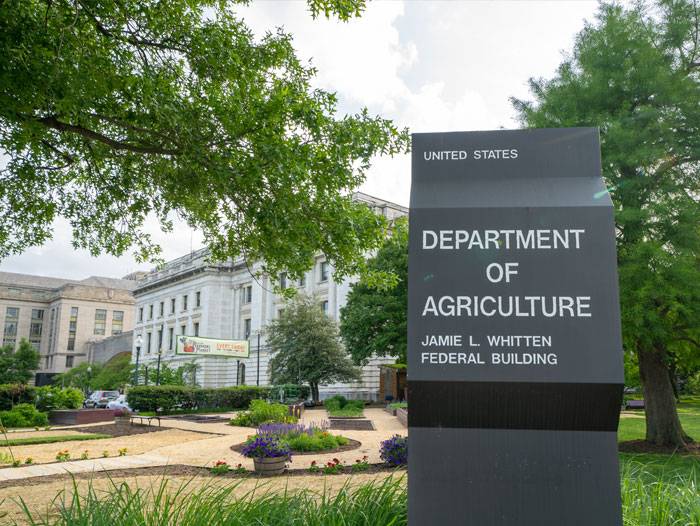The U.S. Department of Agriculture (USDA) announced the appointment of 12 members to serve on the National Dairy Promotion and Research Board. The appointees will serve three-year terms, effective Nov. 1, 2024, through Oct. 31, 2027.
Newly appointed members are:
- Adrienne Allen, Oregon (Region 1)
- Paul M. Danbom, California (Region 2)
- Arlene J. Vander Eyk, California (Region 2)
- Lauren Collier, Texas (Region 4)
- Tasha K. Schleis, Wisconsin (Region 6)
- Mark A. Fellwock, Missouri (Region 7)
- Ashley N. Stockwell, Indiana (Region 9)
- Sheila Marshman, New York (Region 12)
Reappointed members are:
- Suzanne N. Vold, Minnesota (Region 5)
- Sara S. Bahgat-Eggert, Wisconsin (Region 6)
- Paxton Robinson, Idaho (Region 8)
- Caleb E. Crothers, Maryland (Region 11)
The National Dairy Promotion and Research Board is composed of 36 dairy farmer members who represent 12 geographic regions within the United States and one importer member who represents dairy importers. The board was established by the Dairy Production Stabilization Act of 1983 to develop and administer a coordinated program of advertising and promotion to increase the demand for dairy products and ingredients.
More information about the board is available on the USDA Agricultural Marketing Service National Dairy Promotion and Research Board webpage.
Since 1966, Congress has authorized industry-funded research and promotion boards to provide a framework for agricultural industries to pool resources and combine efforts to develop new markets, strengthen existing markets and conduct important research and promotion activities. AMS provides oversight to 22 boards. The oversight ensures fiscal accountability and program integrity and is paid for by industry assessments.
AMS policy is that diversity of the boards, councils and committees it oversees should reflect the diversity of their industries in terms of the experience of members, methods of production and distribution, marketing strategies, and other distinguishing factors, including but not limited to individuals from historically underserved communities, that will bring different perspectives and ideas to the table. Throughout the full nomination process, the industry must conduct extensive outreach, paying particular attention to reaching underserved communities, and consider the diversity of the population served and the knowledge, skills, and abilities of the members to serve a diverse population.
